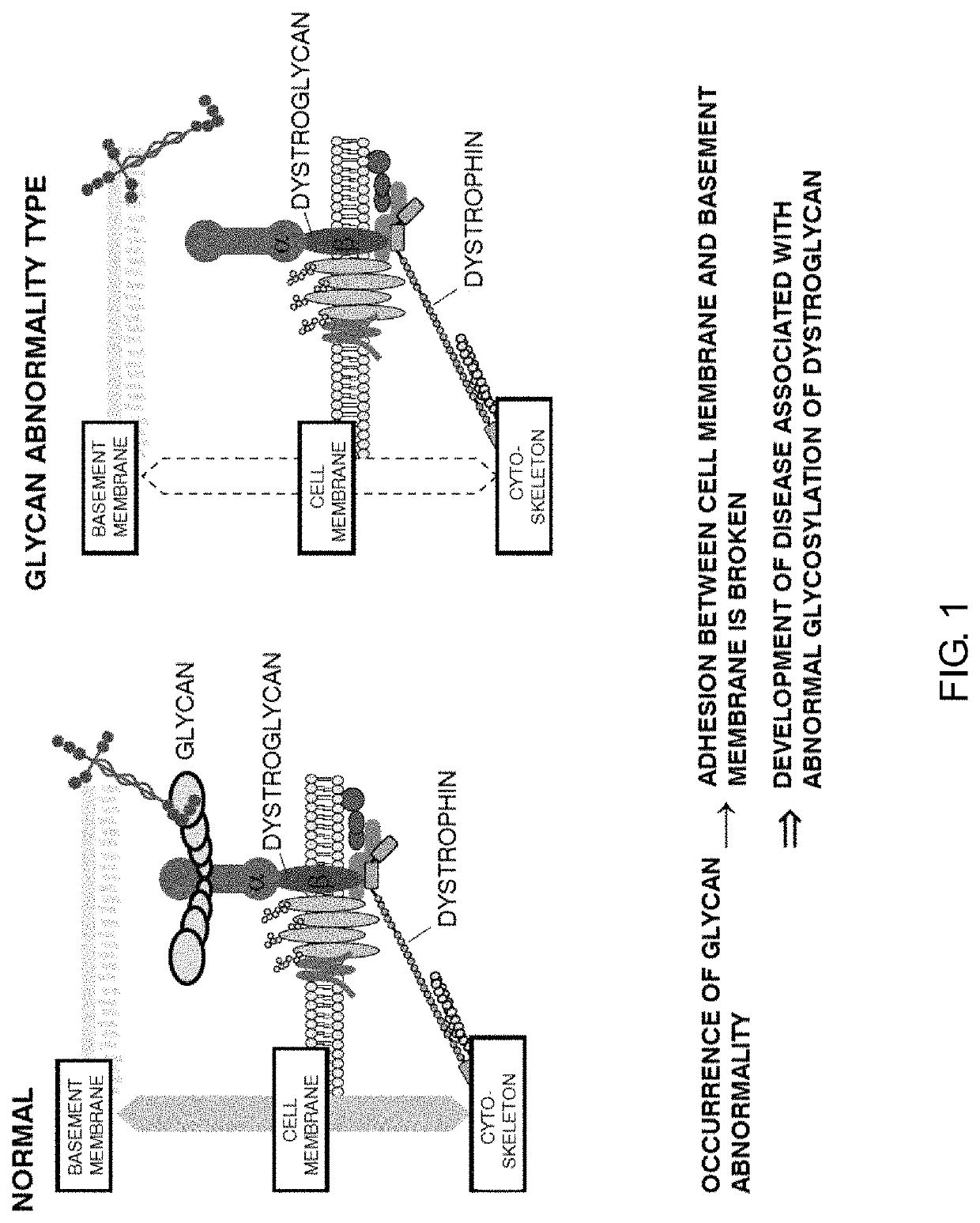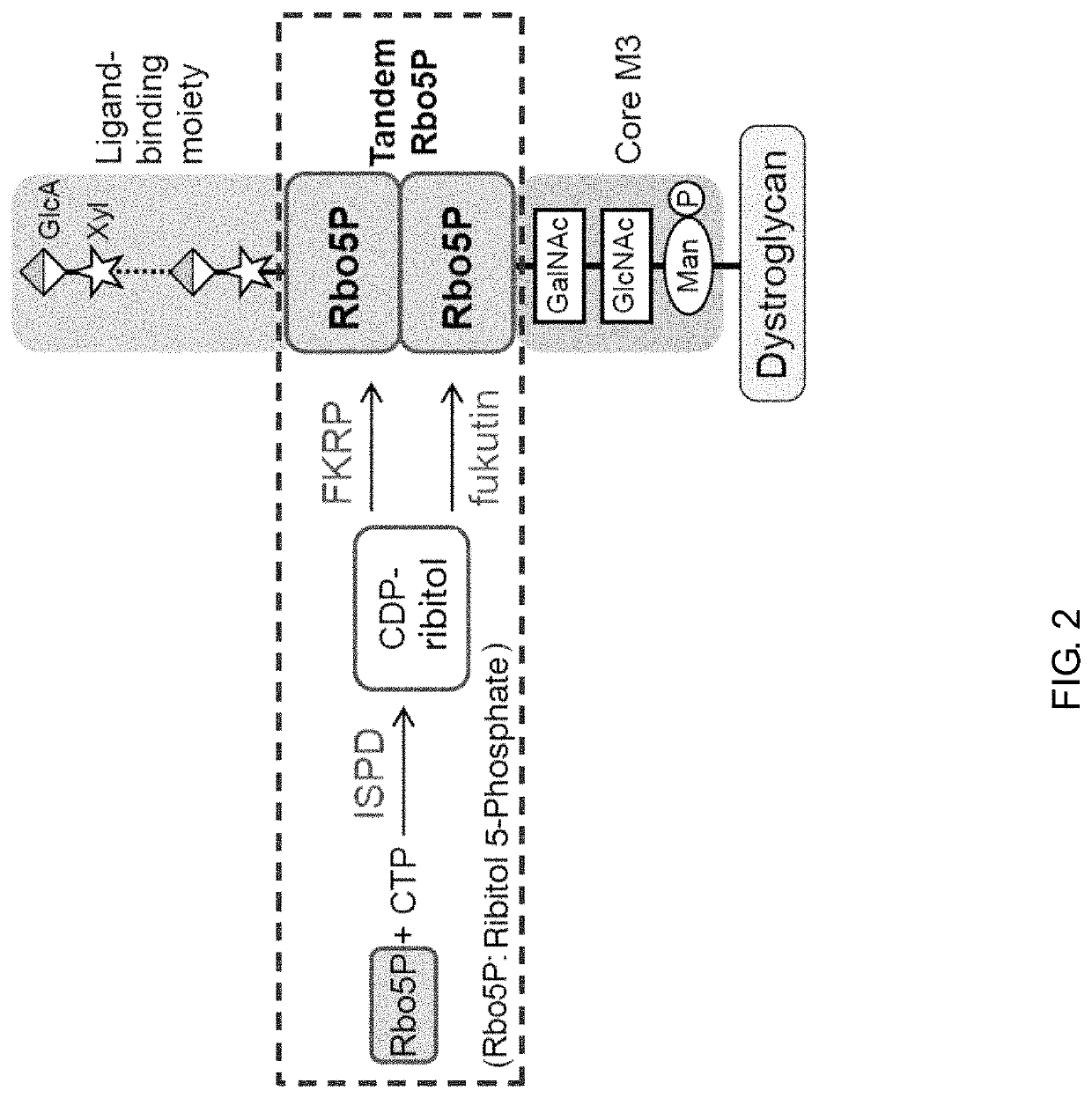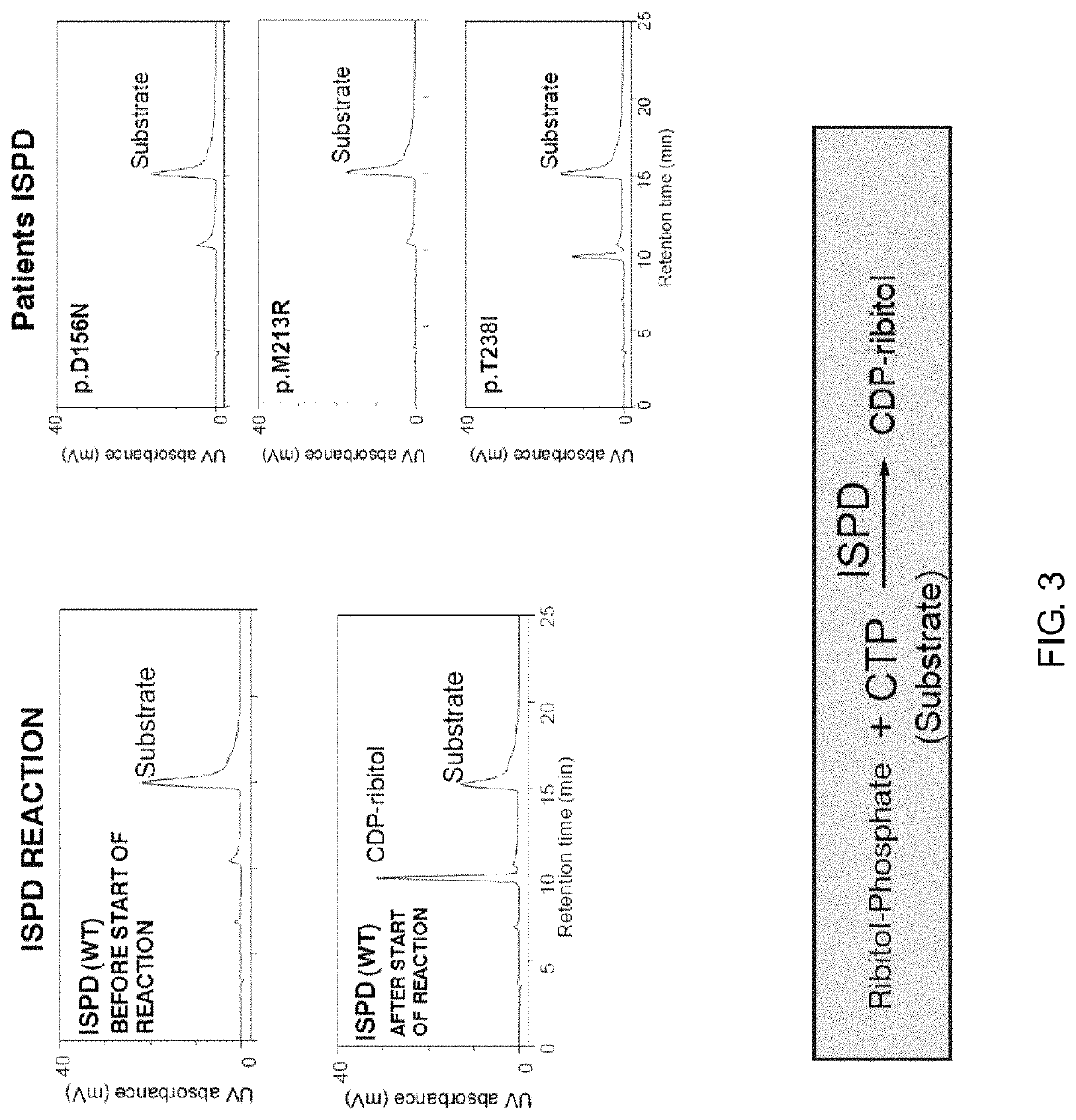Therapeutic agent for diseases associated with abnormalities in dystroglycan sugar chain modification and method for assaying associated enzyme
a dystroglycan sugar chain modification and dystroglycan sugar technology, applied in the field of therapeutic agents, can solve the problems of not being demonstrated at all, muscular dystrophy accompanied by brain malformation or mental retardation, etc., and achieve the effect of effectively treating the disease and/or ameliorating the symptoms associated
- Summary
- Abstract
- Description
- Claims
- Application Information
AI Technical Summary
Benefits of technology
Problems solved by technology
Method used
Image
Examples
reference example 1
[0107]In this Reference Example, the details of the structural analysis of a dystroglycan glycan, which has led to the completion of the present invention, and the preparation of dystroglycan for mass spectrometry for the analysis of the glycan structure are described.
[0108]For the purpose of the structural analysis of the dystroglycan glycan, it was difficult to secure a sample amount required for the analysis from a biological tissue. Meanwhile, with regard to a recombinant capable of securing a large sample amount, there were also problems in that: even when cultured cells were caused to express recombinant dystroglycan, the efficiency with which the recombinant dystroglycan was modified with a glycan having physiological activity similar to that of dystroglycan in a biological tissue was extremely low; and the recombinant dystroglycan had a glycan structure different from that in a living body. Further, another factor making the glycan analysis difficult was that dystroglycan ha...
example 1
(Example 1) Action of ISPD
[0116]In this Example, with regard to ISPD serving as one of the responsible genes for muscular dystrophy, its function in glycosylation of dystroglycan was confirmed.
[0117]1. Reaction with Normal ISPD
[0118]In bacteria, CDP-ribitol is synthesized by a reaction between ribitol-phosphate (ribitol 5-phosphate: Rbo5P) and CTP. In this Example, the action of ISPD was investigated as to whether it was possible to synthesize CDP-ribitol from ribitol-phosphate using CTP as a substrate. His-tagged human ISPD was generated by a recombination operation, and used as an enzyme source. Gene information on human ISPD is disclosed in RefSeq: NM_001101426. The generated human ISPD was mixed with ribitol-phosphate and CTP to cause an enzymatic reaction, and the enzymatic reaction product was analyzed by HPLC. The enzymatic reaction was performed under the following conditions: human ISPD was subjected to a reaction in a total of 40 μl of a reaction solution containing 100 mM...
example 2
(Example 2) Action of Fukutin
[0122]In this Example, with regard to fukutin serving as one of the responsible genes for muscular dystrophy, its function in glycosylation of dystroglycan was confirmed.
[0123]1. Reaction with Normal Fukutin
[0124]The action of fukutin on the synthesis of a dystroglycan glycan was investigated. Human fukutin was generated by a recombination operation. Gene information on human fukutin is disclosed in RefSeq: NM 006731. Fukutin was expressed as a secretion-type recombinant by removing the transmembrane domain. CDP-ribitol serving as a sugar donor substrate (donor for ribitol-phosphate) and a phosphorylated Core M3-modified peptide serving as a sugar acceptor substrate were mixed with the generated secretion-type human fukutin to cause an enzymatic reaction, and the enzymatic reaction product was analyzed by HPLC. The enzymatic reaction was performed under the following conditions: 25 μl of human fukutin bound to agarose beads was subjected to a reaction in...
PUM
| Property | Measurement | Unit |
|---|---|---|
| time | aaaaa | aaaaa |
| temperature | aaaaa | aaaaa |
| pH | aaaaa | aaaaa |
Abstract
Description
Claims
Application Information
 Login to View More
Login to View More - R&D
- Intellectual Property
- Life Sciences
- Materials
- Tech Scout
- Unparalleled Data Quality
- Higher Quality Content
- 60% Fewer Hallucinations
Browse by: Latest US Patents, China's latest patents, Technical Efficacy Thesaurus, Application Domain, Technology Topic, Popular Technical Reports.
© 2025 PatSnap. All rights reserved.Legal|Privacy policy|Modern Slavery Act Transparency Statement|Sitemap|About US| Contact US: help@patsnap.com



